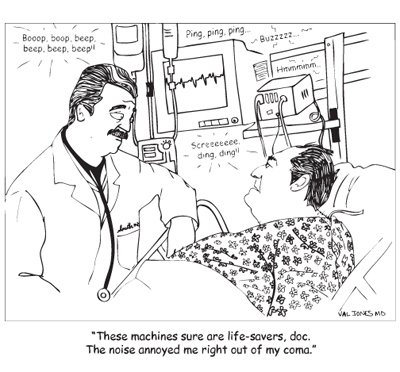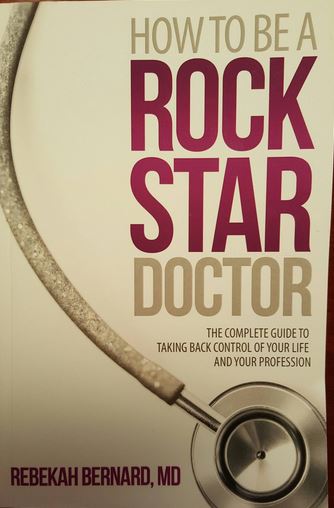July 31st, 2009 by RamonaBatesMD in Better Health Network, News
No Comments »

H/T to MedGadget who’s post introduced me to “bioactive sutures.” What a great idea by the Johns Hopkins biomedical engineering students!
……have demonstrated a practical way to embed a patient’s own adult stem cells in the surgical thread that doctors use to repair serious orthopedic injuries such as ruptured tendons. The goal, the students said, is to enhance healing and reduce the likelihood of re-injury without changing the surgical procedure itself.
The project team of 10 undergraduates focused on Achilles tendon injuries which require repair in approximately 46,000 people in the United States every year. The surgery may fail in as many as 20%. Recovery can take up to a year even with successful surgery. If this new suture speeds healing and lowers failure rates – what potential!
At the site of the injury, the stem cells are expected to reduce inflammation and release growth factor proteins that speed up the healing, enhancing the prospects for a full recovery and reducing the likelihood of re-injury. The team’s preliminary experiments in an animal model have yielded promising results, indicating that the stem cells attached to the sutures can survive the surgical process and retain the ability to turn into replacement tissue, such as tendon or cartilage……………
As envisioned by the company and the students, a doctor would withdraw bone marrow containing stem cells from a patient’s hip while the patient was under anesthesia. The stem cells would then be embedded in the novel suture through a quick and easily performed proprietary process. The surgeon would then stitch together the ruptured Achilles tendon or other injury in the conventional manner but using the sutures embedded with stem cells.
*This blog post was originally published at Suture for a Living*
May 28th, 2009 by Paul Auerbach, M.D. in Better Health Network
2 Comments »

 Outdoor enthusiasts are often stricken with infections for which they might be prescribed antibiotics in the class known as fluoroquinolones, one common member of which is ciprofloxacin (Cipro). They should be aware that a fairly well accepted complication of taking a fluoroquinolone for more than a few days is development of tendinitis leading to tendon rupture, notably of the Achilles tendon. The risk is such that the Food and Drug Administration (FDA) requires the makers of such drugs as ciprofloxacin and levofloxacin (Levaquin) to publish a black box warning on the packages alerting users to potentially serious side effects. The full list of drugs affected by the warning include ciprofloxacin (marketed as Cipro and generic ciprofloxacin); ciprofloxacin extended release (marketed as Cipro XR and Proquin XR); gemifloxacin (marketed as Factive); levofloxacin (marketed as Levaquin); moxifloxacin (marketed as Avelox); norfloxacin (marketed as Noroxin); and ofloxacin (marketed as Floxin and generic ofloxacin). As new fluoroquinolones appear on the market, they will undoubtedly be included in the warning program. The warning does not apply to eye and ear drops – only to medications taken orally or by injection.
Outdoor enthusiasts are often stricken with infections for which they might be prescribed antibiotics in the class known as fluoroquinolones, one common member of which is ciprofloxacin (Cipro). They should be aware that a fairly well accepted complication of taking a fluoroquinolone for more than a few days is development of tendinitis leading to tendon rupture, notably of the Achilles tendon. The risk is such that the Food and Drug Administration (FDA) requires the makers of such drugs as ciprofloxacin and levofloxacin (Levaquin) to publish a black box warning on the packages alerting users to potentially serious side effects. The full list of drugs affected by the warning include ciprofloxacin (marketed as Cipro and generic ciprofloxacin); ciprofloxacin extended release (marketed as Cipro XR and Proquin XR); gemifloxacin (marketed as Factive); levofloxacin (marketed as Levaquin); moxifloxacin (marketed as Avelox); norfloxacin (marketed as Noroxin); and ofloxacin (marketed as Floxin and generic ofloxacin). As new fluoroquinolones appear on the market, they will undoubtedly be included in the warning program. The warning does not apply to eye and ear drops – only to medications taken orally or by injection.
Many patients and health care professionals are not aware of this risk, which is very real, having been officially reported in literally hundreds of patients. Although the drugs are phenomenal in terms of their ability to fight certain bacterial infections, users should be aware of this possible side effect, so that they can discontinue taking the culprit medication and switch to an alternative antibiotic(s) if need be. If tendon pain develops (typically about a week after initiation of therapy) when a person is taking a fluoroquinolone antibiotic, that is the time to make the switch. Simultaneously, anyone affected should diminish or avoid exercise and cease stressing the affected area until such time as the situation is resolved, as would be determined by decreased pain and other signs of inflammation. Most patients can be expected to recover within 10 weeks after discontinuing the antibiotic, but it may take longer.
Fluoroquinolones are widely used to treat infections in adults. They are not commonly prescribed for children because of a risk for eroding cartilage; however, if the medical necessity is important, they can be used in young individuals. The tendon rupture problem is therefore largely a problem of adults, and typically affects the Achilles tendon, with onset of symptoms within the first few weeks after the initiation of antibiotic therapy. Other tendons, including those of the upper extremity, may be involved. It is perhaps the large forces placed upon the Achilles tendon that makes it so prominent in this particular medical situation. Furthermore, the risk of fluoroquinolone-associated tendinitis and tendon rupture appears to be greater in persons older than 60 years of age, in those taking corticosteroid drugs (“steroids”), and in kidney, heart, and lung transplant recipients.
This post, Fluroquinolone Antibiotics and Tendon Rupture, was originally published on
Healthine.com by Paul Auerbach, M.D..













